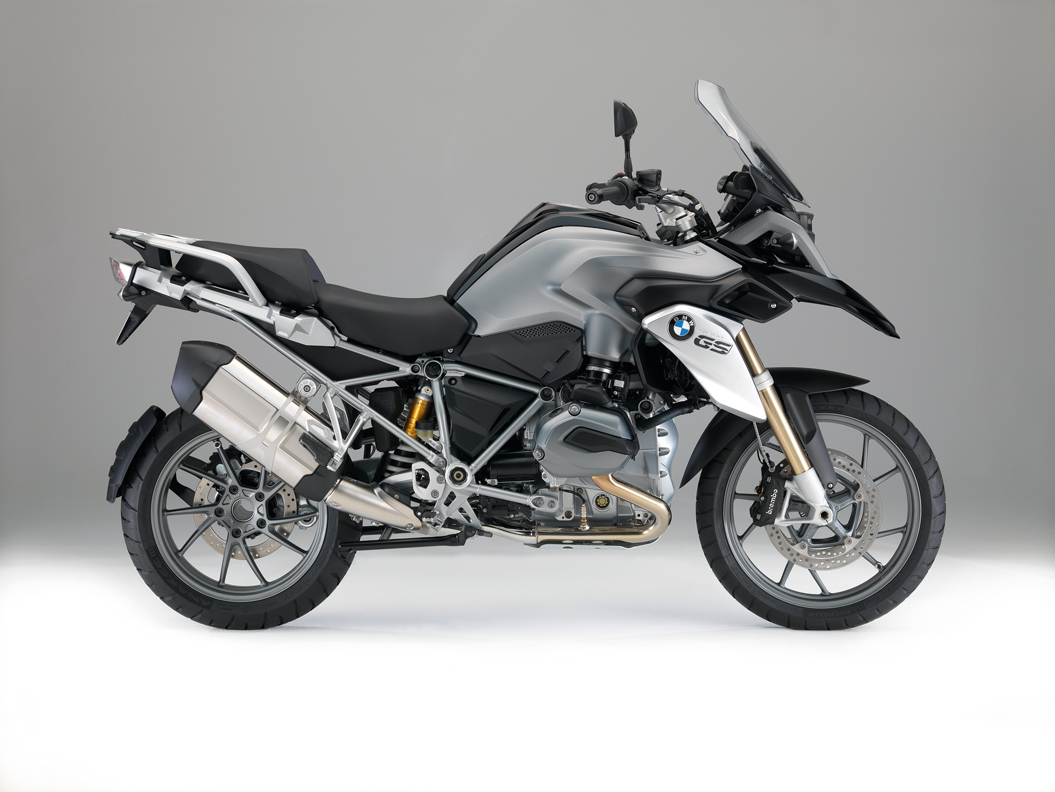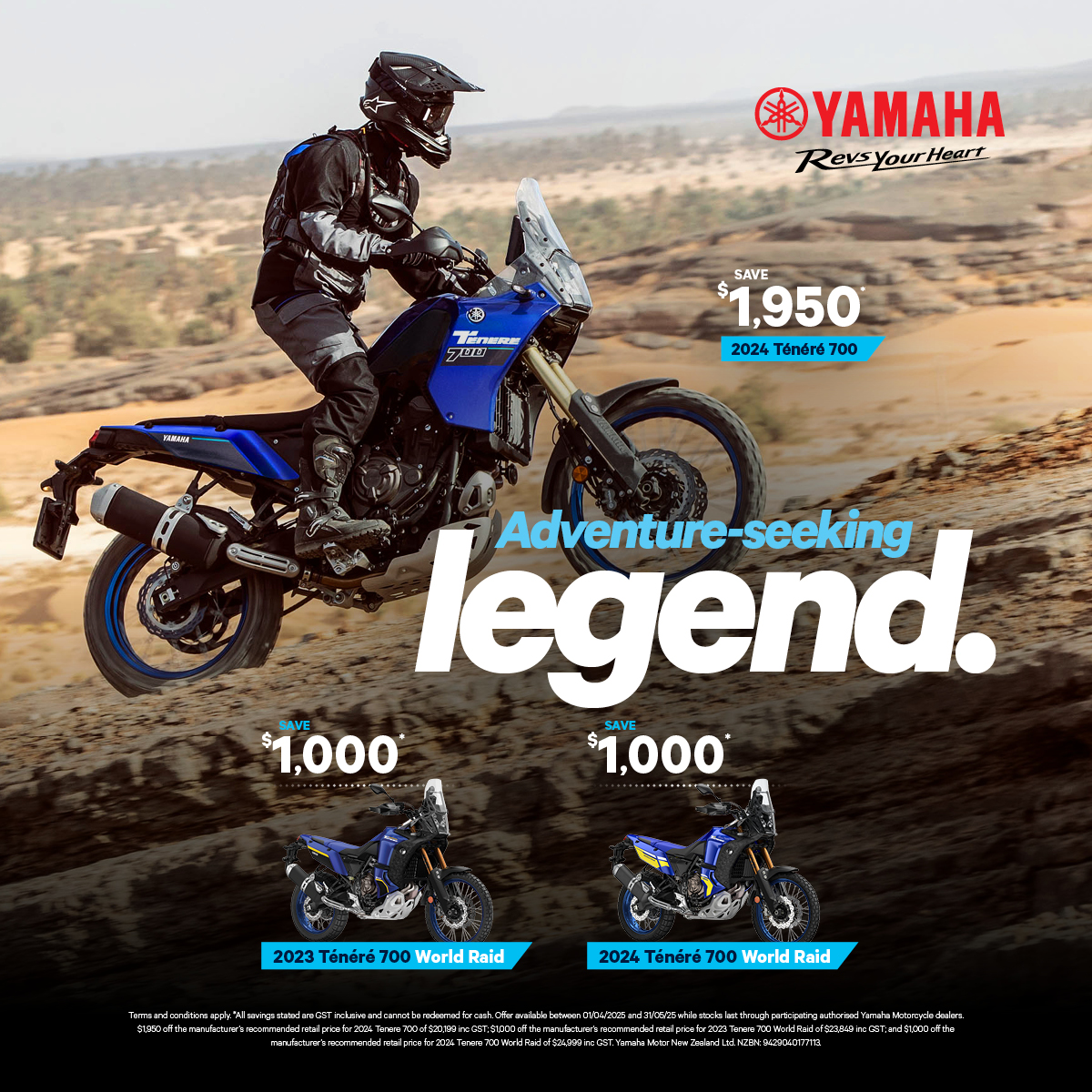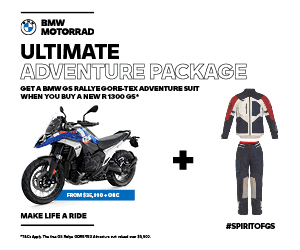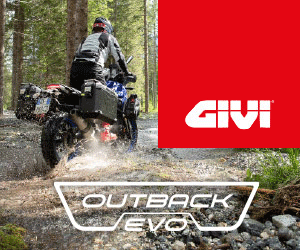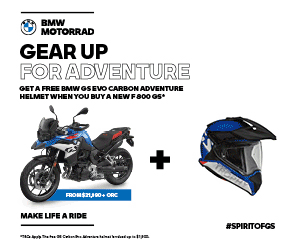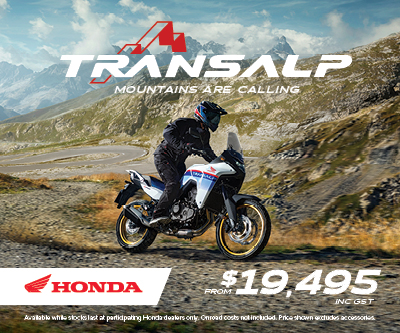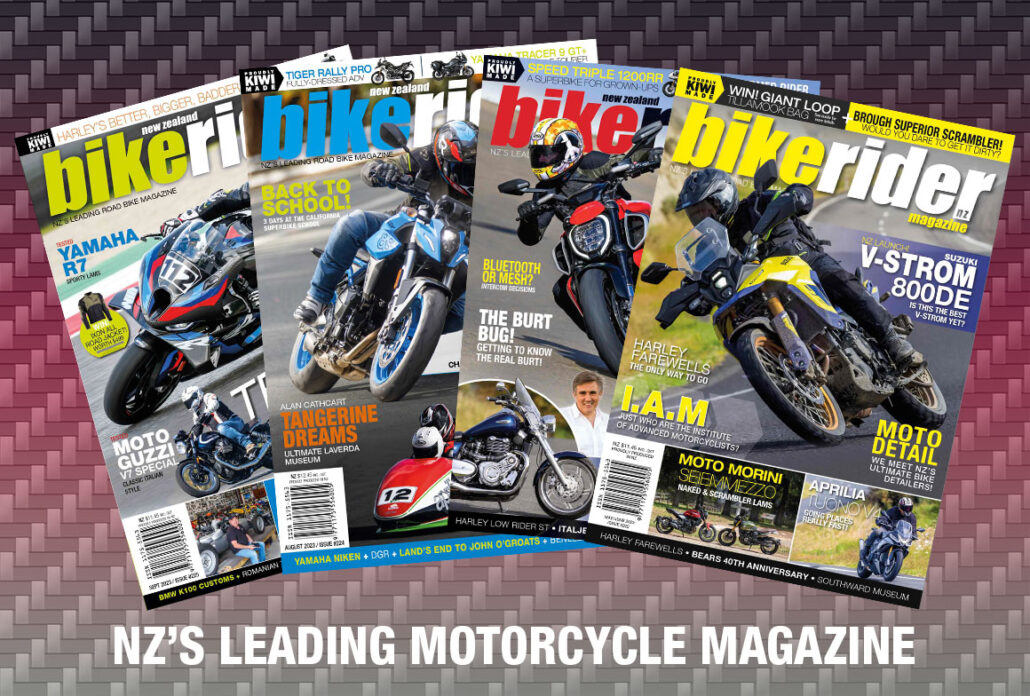Seriously Sorted
Words: Kev | Photos: Paul
It really is the bike that started the adventure market on the technology path. BMW have been hard at work making, what is the benchmark against which others are measured against, even more capable…
The secret to the success of the legendary BMW R 1200 GS isn’t just its ability to conquer mountain ranges and deserts with ease, although it will oblige readily enough. The vast majority of owners are more likely to want to conquer the backroads in comfort, loaded up with luggage and/or a pillion. They’ll also want to be able to ride with their friends on cruisers, sportsbikes and maybe even do the occasional adventure ride. Can one motorcycle tick all of those boxes? Well, anyone who has owned a GS will tell you, it can. It may not always be at the front of the pack in every situation, but with 125hp and sophisticated electronics (including ESA or electronic suspension adjustment), it won’t be far behind either. This is the workhorse of the BMW stable, and a fantastic motorcycle in its own right. If you want to get more rugged and seriously out-doorsy, there’s always the Adventure version, complete with enough fuel capacity to avoid civilisation for hundreds of kays on end.
Our test bike just happened to be the full-spec R 1200 GS model, complete with the optional lock-on GPS, ESA and one of the coolest switchblocks around. That swivelly-toggelly-thingy makes zooming in and out on the maps, adjusting all the adjustable bits and generally utilising everything the big GS has to offer a quick spin away. The full-spec model also has the Enduro and Enduro Pro modes, letting the big Beemer go places you’d not expect to see a 1200cc bike – as long at the rider is up to the task. With the optional plug in place, you can slide the rear and the ABS lets the front move around before stepping in to keep you upright. The plug also stops the bike defaulting back to ABS on when the ignition switch is turned off.
Loaded with gadgets and a full suite of electronic goodness, the clever bits are all made easy to use as well as useful. The GPS is integrated fully with the other clever bits as well, and also doubles as a read-out for lots of the other functions onboard. Scrolling with the swivel control and you not only have the ability to zoom in and out and play with the GPS, you can get a screen that shows tyre pressure, fuel use, let it talk to you when lost (and give coordinates for the search and rescue if required), calculate average speed; pretty much everything bar the result of the upcoming test match, although that may be an optional extra by now too.
Making the ESA and power maps so simple to alter on the go means that they are definitely not consigned to the gimmick department. In fact, nothing on the GS is gimmicky – it just happens to have all the bases covered. Do you change ESA suspension modes when someone wants to jump on the back? Yep, you do. Does it make a difference? Yes it does. Even with the Telelever suspension not diving under brakes, having it set up for the demands makes a massive difference. Working out exactly how you like it is personal preference, as when pushing on in the ‘Dynamic’ mode I tend to set the suspension for pillion riding (two heads on the dash), which firms the suspension and adds a bit more preload at the rear. The system works well, and once you calibrate yourself, it is very handy.
With a mode and suspension setting for any occasion, the utilitarian-looking R 1200 GS relies on its ability rather than prettiness to win over riders. The look is blunt but it does grow on you and those big pots sticking out the side do let your shins know for a little while, as you can’t stick the leg forward. But after a few armoured boot versus cylinder moments, you soon remember they’re there and it all felt natural enough with a trailing leg instead.
Although the look is every inch GS fare, lots has changed with the introduction of this new model last year. The thing that catches attention most is the water-cooling and the rotation of the inlet and exhaust. That step has allowed BMW to up the power, as the exhaust ports and heads are kept cooler and the temperature more stable. With higher compression and new cams, the engine has a familiar feel but now produces similar horsepower to the hot-rod of the earlier boxer class, the HP2. I was fortunate enough to take Moggies’ (M1 Motorsport) HP2 around Pukekohe once and was impressed with its pace. Having an adventure bike that quick is almost ridiculous, but fun, I must say. That 125hp lets the new GS surprise lots of non-believers, as does the handling of the imposing beast. Once in the saddle, it’s surprisingly agile and so well balanced that the sheer size and complexity vanishes. With the two seat heights able to be swapped in less than ten seconds, you do swap from the relaxed lower road and around town position to the taller adventure option, even if you’re not tall. It makes the transition from sitting to standing that bit easier, making a huge difference on long rides.
As with all BMW motorcycles, ABS is standard fare. The system on the GS is designed to keep you safe, so you need the optional Enduro capability if you are heading seriously off-piste. Matched by smart traction control, it’s surprising where you can go with the assistance. Slippery grass hills are best done with the electronics on, particularly if there are any bumps. You adopt the ‘electronics for traction, I’ll just dial in the speed and steer the big Beemer’ after a few failed attempts to get grip from what are fairly tar-biased but impressively versatile Anakee 3 tyres in the wet. You can hear the exhaust note chop and change as it works out how to keep you moving forwards. A set of chunky block-section adventure tyres would be less fun on the road but let you get stuck a lot further from the road. The whole system is more sophisticated and efficient than the earlier models, on and off road. The earlier traction control could inadvertently cause you to lose too much momentum at times, not ideal on a bike this size if you don’t make it up the other side. With the new model, you’ll probably find you get further up any hill if you leave it on.
Even the screen is well thought out, only needing one hand to give the adjuster wheel a crank and set the height to suit. Even when it’s at maximum height, the typically well-engineered second part of the screen stops the windblast from merely hitting you from below. It’s the detail that makes the BMW R 1200 GS such an easy motorcycle to live with. Even servicing the rear shock is made easy with the bolts accessible without dismantling the whole rear of the bike. The GS is an engineer’s bike, rather than a stylist’s so everything has to function well – if it happens to look cool, that’s a bonus. That said, the stylists at BMW haven’t been shut out completely, they’ve adapted and managed to work with the design, rather than try to hide it. The end result is one of the most recognisable motorcycles of the era, as well as one that transcends loads of classes. Built as an adventure bike, although not as ‘adventure’ focussed as the GSA, it’s also hugely popular with the touring fraternity as well as those wanting one bike to do all things. Capable of ripping into twisty tarmac with ease, the suspension allows backroad entertainment on a level few can match as well as long-legging with luggage to the far end of the country – or the big OE.
Does it have any drawbacks? Not really, although it isn’t so refined it’s boring. It does have that familiar BMW Boxer thrum-thrum-thrum on a constant throttle at low speeds, and it’s not silky smooth by any means, even with reduced rotating mass and improved balancer. It would lose something if the bike designed to tackle places hard bastards like to go got all gooey and mellow. It even sounds pretty staunch, with a guttural, almost aircraft sound that isn’t annoyingly loud on tour but has enough snap to the bark to dispel any myths about the BMW R 1200 GS being soft. I found the speedo positioning a bit too low with the upright riding position, but the GPS has a readout in plain sight. Getting a bit picky, Kev?
The new water-cooled edition takes the GS forward into the modern era without losing any of its impressive past, so although it has the new, more powerful engine, a completely new clutch and the shaft drive has swapped sides, they haven’t thrown the baby out with the water. Much of the fettling done over the last thirty years, and the lessons learned, are still intact. It really is a case of improving the breed. Even the liquid-cooling is done in such a way that the odds of seriously damaging it are as low as feasible, as the engine is still largely reliant on air-cooling, with targeted assistance by the radiator-cooled fluid. This has enabled BMW to use smaller radiators than look feasible on such a large engine. So even that possible drawback has been largely mitigated out of the equation. If you want the power that the new generation of 1200cc adventure bikes provide, basically it is out of reach without radiators – it’s down to the maths. Those little water-coolers have enabled BMW to up the compression ratio to get more power without compromising the reputation for being able to tackle the harshest environments you’ll encounter.
BMW are well aware that everyone wants a piece of what was, for a long while, their pie. Determined to keep their large piece has seen them get serious about the big boxer. There are other contenders, like KTM’s more powerful chain-driven 1190 Adventure, Ducati’s quicker but less off-road Multistrada, Yamaha’s shaft-driven Super Ténéré to name but a few but numerically, the GS still rules the roost and is showing no signs of being willing to step aside.
After 6
If you haven’t ridden a new-generation BMW boxer, it may hold a few surprises in store, like the fact that play doesn’t end at 6000rpm. On the early models, the numbers from 7-10,000rpm were there pretty much to avoid an unsightly blank spot on the rev-counter’s face. The power flattened off pretty early, in a fashion that earned the wrong but often used ‘diesel’ analogy. The R 900 had an enviable race record but didn’t howl like the new era demanded. The new liquid-cooled R-series is still happy to cruise on that beefy torque curve but really comes alive on the other side of six grand. Seven sees 200km/h in top and the R 1200 GS is still accelerating bullishly. With the ESA suspension set to Dynamic and two-up, shaking a GS in the twisties will make most bikes break a sweat… if they can.
Specs
Standard model price: $28,490
Full Spec model price: $32,990
Has all that the standard model has, as in heated grips, tyre pressure control, hand protection, LED indicators and luggage attachments, plus LED headlights, Riding Modes Pro (giving Enduro and Enduro Pro options), Dynamic ESA, onboard computer, preparation for integrated GPS and cruise control. Spoked wheels are also available for a $750 premium.
Engine: Air/liquid-cooled flat-twin, DOHC, one balance shaft
Bore x stroke: 101mm x 73mm
Capacity: 1170cc
Rated output: 92kW (125hp) @ 7750rpm
Maximum torque: 125Nm at 6500rpm
Compression ratio: 12.5:1
Engine management: EFi with BMS-K+ digital engine management and electromotive throttle actuator (Fly-by-wire in plain English)
Fuel consumption per 100 km at constant
90 km/h 4,1 l
Fuel consumption per 100 km at constant
120 km/h 5,5 l
Fuel type: Unleaded super, octane number
95 (RON) minimum
Alternator: three-phase alternator 580W (nominal power)
Battery: 12V/11.8Ah, maintenance-free
Clutch: Oil lubricated clutch, hydraulically operated
Gearbox: Constant mesh 6-speed gearbox with helical gear teeth
Drive: Shaft drive
Frame: Two-section frame, front and rear sections, load-bearing engine
Front suspension: BMW Motorrad Telelever; 37mm stanchion, central spring strut 190mm travel (Full-Spec model has ESA)
Rear suspension: Cast aluminium single-sided swingarm with BMW Motorrad Paralever; WAD strut (travel-related damping), spring pre-load hydraulically adjustable (continuously variable) at handwheel, rebound damping adjustable at handwheel, 200mm travel (Full-Spec Model has ESA)
Wheelbase: 1507mm
Castor: 99.6mm
Steering head angle: 64.5°
Wheels: Cast aluminium wheels (Spoked wheels as option)
Rim, front: 3.00 x 19″
Rim, rear: 4.50 x 17″
Tyre, front: 120/70 R 19
Tyre, rear: 170/60 R 17
Brake, front: Dual 305mm discs, 4-piston radial calipers
Brake, rear: Single 276mm disc, double-piston floating caliper
ABS: BMW Motorrad Integral ABS (part-integral), can be switched off
DIMENSIONS
Length: 2210mm
Width (incl. mirrors): 953mm
Height (excl. mirrors): 1450mm
Seat height: 850/870mm
Unladen weight: (fully fuelled) 238 kg
Fuel capacity: 20litres
Reserve: approx. 4litres

